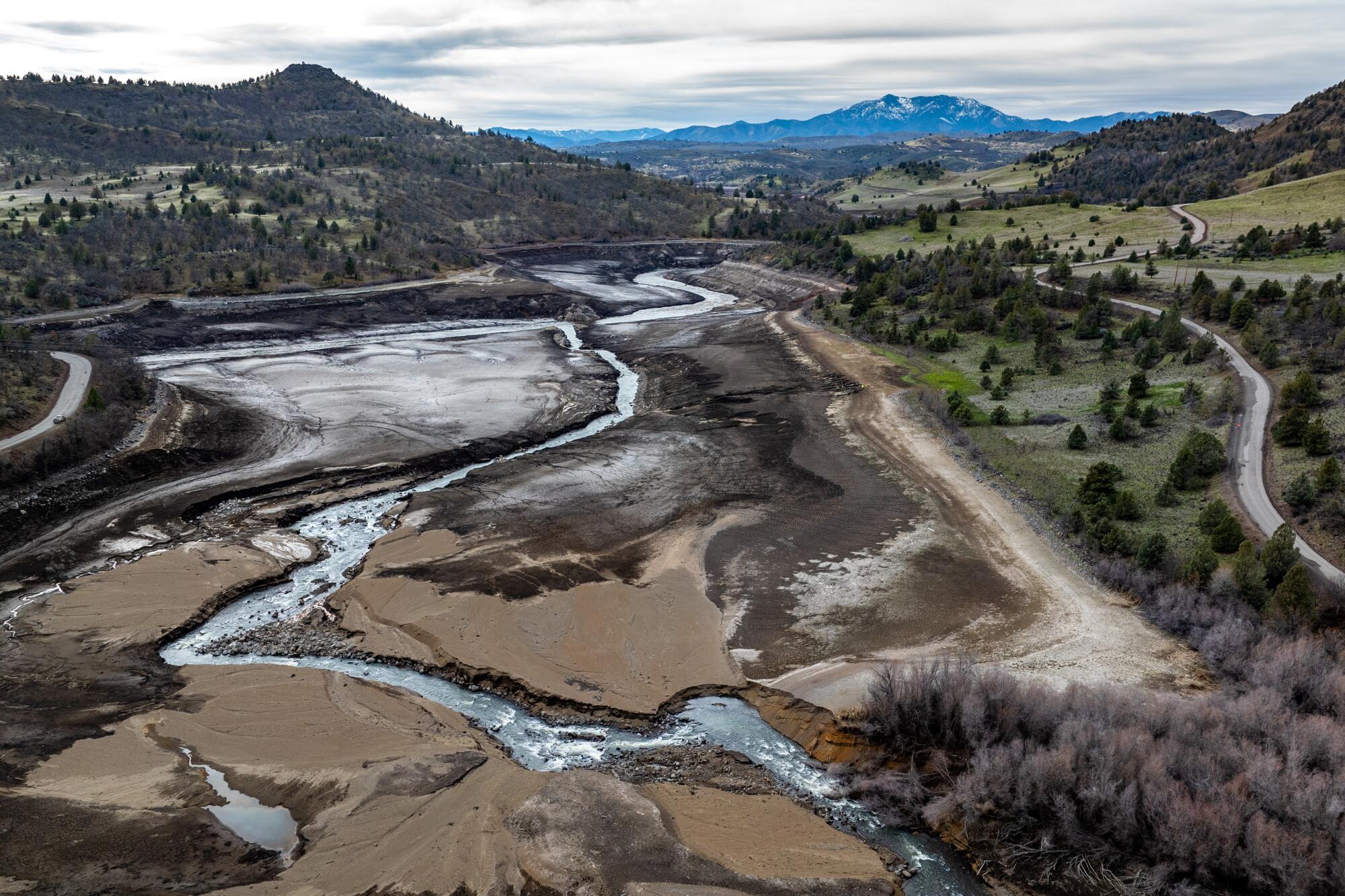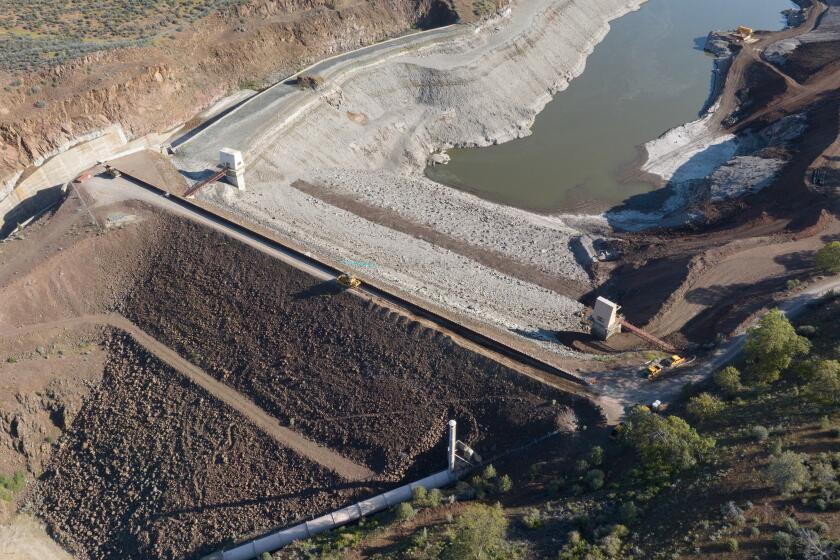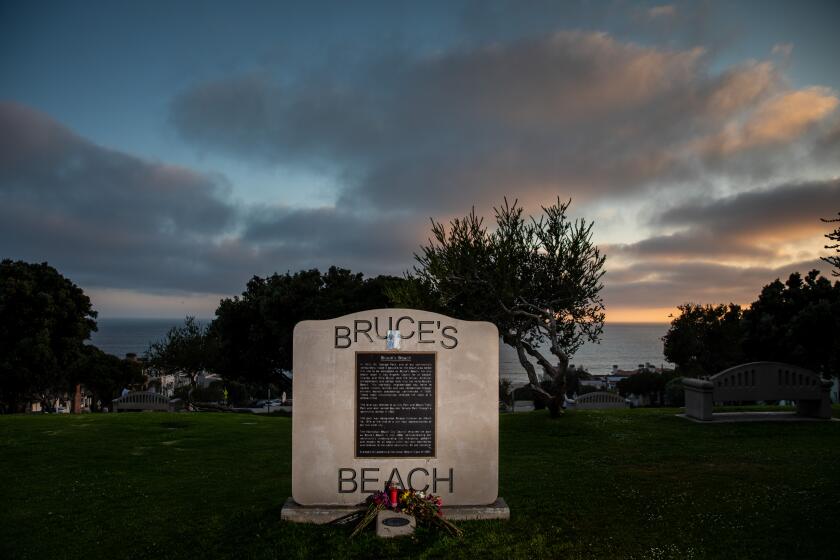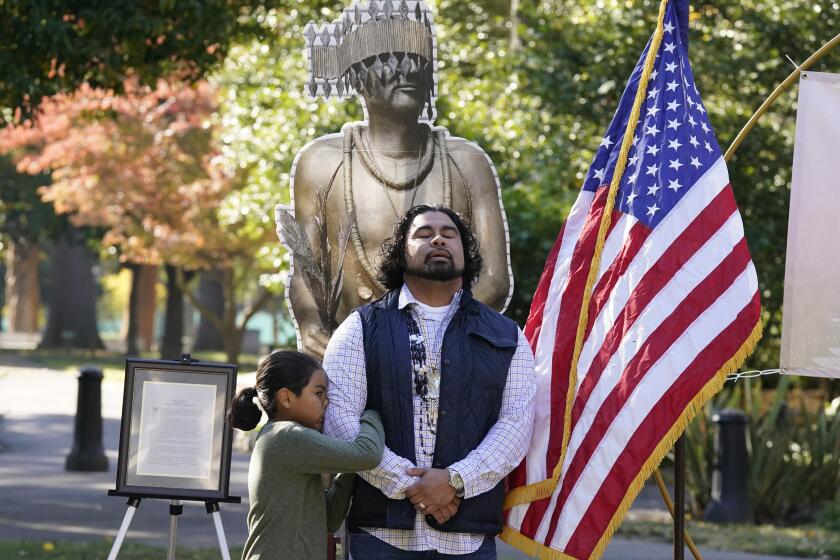
- Share via
More than a century has passed since members of the Shasta Indian Nation saw the last piece of their ancestral home — a landscape along the Klamath River where villages once stood — flooded by a massive hydroelectric project.
Now more than 2,800 acres of land that encompassed the settlement, known as Kikacéki, will be returned to the tribe. The reclamation is part of the largest river restoration effort in U.S. history, the removal of four dams and reservoirs that had cut off the tribe from the spiritual center of their world.
“For so long we have felt a great loss, a loss of our family, our ancestors, for the loss of our villages and ceremony sites,” said Janice Crowe, chair of the Shasta Indian Nation. “Now we can return home, return to culture, return to ceremony, and begin to weave a new story for the next generation of Shasta, who will get to call our ancestral lands home once again.”
Aggressive and impactful reporting on climate change, the environment, health and science.
Recently, Gov. Gavin Newsom announced the state’s support for the return to mark the five-year anniversary of his apology to Indigenous Californians for the theft, violence, forced assimilation and emotional trauma they were subjected to — and his promise to make amends in part through land reclamation.
This reach along the sacred waterway, with its oak and redwood forests and rocky outcroppings, was where the Shasta had harvested elderberries and currants, hunted for deer and used wild pumpkin root to lure salmon into their nets. It had also been the setting for tribal ceremonies.
Until recently, most of the site lay submerged under the Copco and Iron Gate reservoirs.
With the decommissioning of the dams and draining of the reservoirs, miles of river valley are visible once more, and the return of free-flowing water has fueled hopes of reviving the salmon runs that had sustained the valley’s tribes since time immemorial. The Klamath River Renewal Corp. will transfer the 2,800 acres once work is completed, which could come as soon as the end of the year.
The reappearance of the stolen land resurfaces a haunting chapter in the Shasta people’s history, said Sami Jo Difuntorum, the tribe’s lead cultural preservation officer. She has guided tours of the area for years.
Workers have begun dismantling the largest dam on the Klamath River. Indigenous activists are celebrating a milestone in restoring a free-flowing river.
The Gold Rush of the mid- to late 1800s brought miners to the area who killed Indigenous people and sexually attacked tribal women. The violence and land theft were horrific enough, but they led to another atrocity, Difuntorum said — the displacement of people who believe the land to be an extension of themselves.
“Some say it’s woven into our DNA,” Difuntorum said of this profound attachment to the natural world. “It sure feels that way to me when I’m up there.”
Then in 1911, what remained of the Shasta’s territory was seized through eminent domain — the process that governments and special districts use to buy private property against the owner’s will — in order to build Copco No. 1 Dam, a segment of the Lower Klamath Project now being dismantled.
“People didn’t want to sell; people didn’t want to leave,” said Difuntorum, 65.
A state lawmaker from Gardena wants to help victims of racially motivated land seizures get justice.
She thinks about the plight of Shasta women such as the family of her great-great-grandmother, known to everyone as Kitty Grasshopper. Grasshopper’s daughters married local white landowners after the dams were built, Difuntorum said.
Difuntorum recalls stories passed down by elders about the pressure women faced to adopt the ways of the dominant white culture and suppress their tribal identity.
She struggles to put into words how strange it feels for tribal members to carry on for so long, knowing the one place where they feel the most at home has rested in someone else’s hands, and at the bottom of man-made lakes.
“When you think about the health and well-being of Indian people, it’s mental, emotional, physical, spiritual, all of those things,” she said. “Whenever we’re up there doing tours, I don’t think I’ve ever made it through one without — I won’t say I melted down — but crying ... It feels like this generational wound.”
The lands that will go back to the Shasta Indian Nation include not only the Copco Reservoir footprint around what was known as Ward’s Canyon Ranch but the old Copco No. 2 powerhouse, which still stands. Plans are to convert the powerhouse into an interpretive learning center where visitors can learn about the tribe and the story of the river, Difuntorum said.
The tribe will also work to restore native vegetation to the land, especially plants the tribe has traditionally grown for food, basketry, medicine and ceremonies. Some of the harvests, as well as preserved deer and salmon meat, will be shared with tribal members through a food sovereignty program.
Difuntorum also looks forward to the creation of a six-mile heritage trail and the revival of the First Salmon Ceremony, the annual springtime event marking the start of salmon fishing season, a ritual the tribe hasn’t been able to perform since before the dams were built.
“How do you restore people to their sense of place?” Difuntorum asks.
The Wilton Rancheria tribe have fought for years to reclaim stolen lands. A 77-acre parcel outside Sacramento is theirs once more.
She believes the state’s effort to return land to the Shasta Indian Nation, a band of the Shasta people that is not recognized as a sovereign entity by the federal government, represents one answer to this question. She sees the partnership as a model for how governments work with tribes to atone for wrongs that broke apart civilizations and caused heartache to flow down through generations.
The Newsom administration’s support follows similar moves to help other tribes either reclaim land or enter into co-management agreements. The state’s Tribal Nature-Based Solutions grant program has awarded $107.7 million to fund 34 projects and support the return of nearly 50,000 acres of land to California tribes — including the Hoopa Valley Tribe’s acquisition of 10,395 acres of forest property and the Tule River Tribe’s acquisition of 14,672 acres for environmental and species conservation.
The Yurok Tribe recently entered into a novel arrangement with Save the Redwoods, California State Parks and the National Park Service to co-steward ‘O Rew, a culturally important, 125-acre property that was transferred back to them.
“You hear a lot of talk about reparations and what does justice look like — I don’t even know if I can wrap my head around what justice would be to me as a Native woman,” Difuntorum said of her tribe’s land reclamation.
“Returning the land so that our people can return home to the place that we come from — that is just so important,” she said. “But should it be more than that? I don’t know the answer to that, but I think this is a good start.”
Toward a more sustainable California
Get Boiling Point, our newsletter exploring climate change, energy and the environment, and become part of the conversation — and the solution.
You may occasionally receive promotional content from the Los Angeles Times.











